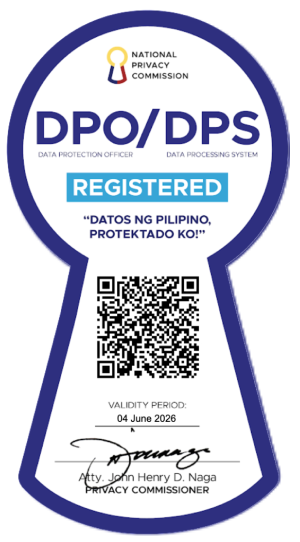
Offering multiple support channels is no longer enough. Customers now expect a smooth experience whether they’re reaching out by phone, chat, email, or social media. But for many businesses, managing these platforms without confusion or delays is still a challenge.
Disconnected tools, unclear workflows, and missed messages can lead to frustration on both sides. That’s why a strong omnichannel customer service approach is important. It allows your team to support customers across platforms in a way that feels consistent and connected.
Below are nine simple but effective ways to upgrade your omnichannel customer support strategy. These tips go beyond the usual advice and focus on helping your agents, improving processes, and delivering better service on every platform.

1. Unify Customer Profiles Across All Channels
One of the first steps in how to implement omnichannel customer service is to bring all customer data into one place.
- Use a system that lets agents view all past conversations, regardless of channel
- Include notes, past issues, and customer preferences
- Avoid repeating the same questions, which saves time and improves satisfaction
When customer profiles are unified, agents can give faster and more accurate responses, even if the conversation moves from chat to phone or email.
2. Assign Channels Based on Support Goals
Instead of using every channel equally, think about the purpose of each one.
- Use chat for onboarding or quick product help
- Use email for detailed billing issues
- Handle sensitive or complex cases over the phone
Matching the right channel to the right situation helps reduce friction and makes it easier to manage expectations.
This also supports your overall omnichannel customer service system by keeping each channel efficient.
3. Measure Channel Performance Differently
Each support channel works differently. That’s why it makes sense to use specific metrics.
- Chat: Track response time and resolution speed
- Email: Measure accuracy and follow-up rate
- Phone: Monitor hold time and first-call resolution
Once you have separate data, link it to bigger goals like retention and satisfaction. This helps you understand the full value of omnichannel customer service beyond basic ticket closures.
4. Train Agents to Switch Channels Smoothly
It’s common for a customer to start on one channel and continue on another. An issue might begin on chat, escalate to a call, and then need a follow-up email.
Training agents on how to move between platforms while keeping context is key.
- Teach them how to review past messages quickly
- Make sure they keep the tone and message consistent
- Remind them to update notes in the system for team visibility
This is one of the best practices for omnichannel support, especially when teams handle large volumes of customer inquiries.
5. Add Tags and Notes to Every Interaction
Adding structured notes and tags helps you:
- Group similar issues across platforms
- Spot repeat problems or high-demand topics
- Analyze team performance and support trends
For example, tags like “login issue” or “refund request” make it easier to track recurring complaints across email, chat, and phone.
This strengthens your omnichannel customer service by providing data you can actually use.
6. Use Timed Follow-Ups Across Channels
Following up is a simple but often forgotten strategy. A short message after an issue is resolved can show customers you care and make sure they don’t have new questions.
Examples:
- Send a text message after a call to confirm resolution
- Email a summary after a live chat session
- Ask for feedback a day later through a survey
Follow-ups also allow you to double-check satisfaction and show consistency across your omnichannel customer service approach.
7. Combine Self-Service and Human Support Wisely
Using chatbots or FAQ tools for basic tasks is helpful. But don’t let them replace human agents completely.
- Use bots for order tracking, hours, or common questions
- Let agents handle cases that involve emotions, special requests, or complaints
- Make sure agents can access past bot interactions to stay informed
This balance keeps your omnichannel customer service responsive while still feeling personal.
8. Keep the Same Tone Across Channels
Using the same tone in all customer messages helps customers trust and like your brand more. A study found that 73% of people want a smooth, consistent experience no matter how they reach out. If emails sound formal but social media messages are too casual, customers can get confused.
That’s why tone matters just as much as the message.
- Train agents to follow your brand voice guide
- Use sample replies for tone training
- Review tone during feedback sessions or coaching
When tone stays the same, your support feels more unified, which is important in how to improve call center customer service and overall brand trust.
9. Monitor Quality Across the Whole Experience
Most teams check call recordings or read emails, but fewer look at the whole journey.
To improve, include cross-channel reviews in your quality checks:
- Look at how an issue moved from one channel to another
- Check if follow-ups were done correctly
- Review whether agents shared the same information throughout
This approach lets you catch issues that only appear when you zoom out and see the full customer journey across channels.
Why Omnichannel Support Matters More Than Ever
Using an omnichannel customer service approach helps businesses:
- Reduce wait times by using the best channel for each task
- Deliver consistent answers across platforms
- Improve customer satisfaction and team performance
It’s more than just offering many contact options. It’s about making sure every part of your support system works together smoothly.
Build Better Support Across Every Channel
Strong support doesn’t happen by accident. These nine tips give you clear steps to improve your omnichannel customer support strategy without overcomplicating your setup.
Whether you’re focusing on better training, improved follow-ups, or smarter use of data, small changes can lead to big improvements in service quality and speed.
If you’re wondering how to implement omnichannel customer service in a way that fits your operations, SuperStaff can help. We offer tailored solutions that help businesses provide high-quality support across all platforms.
Need help setting up or improving your support systems? Let SuperStaff help you build a better, more connected support strategy.






